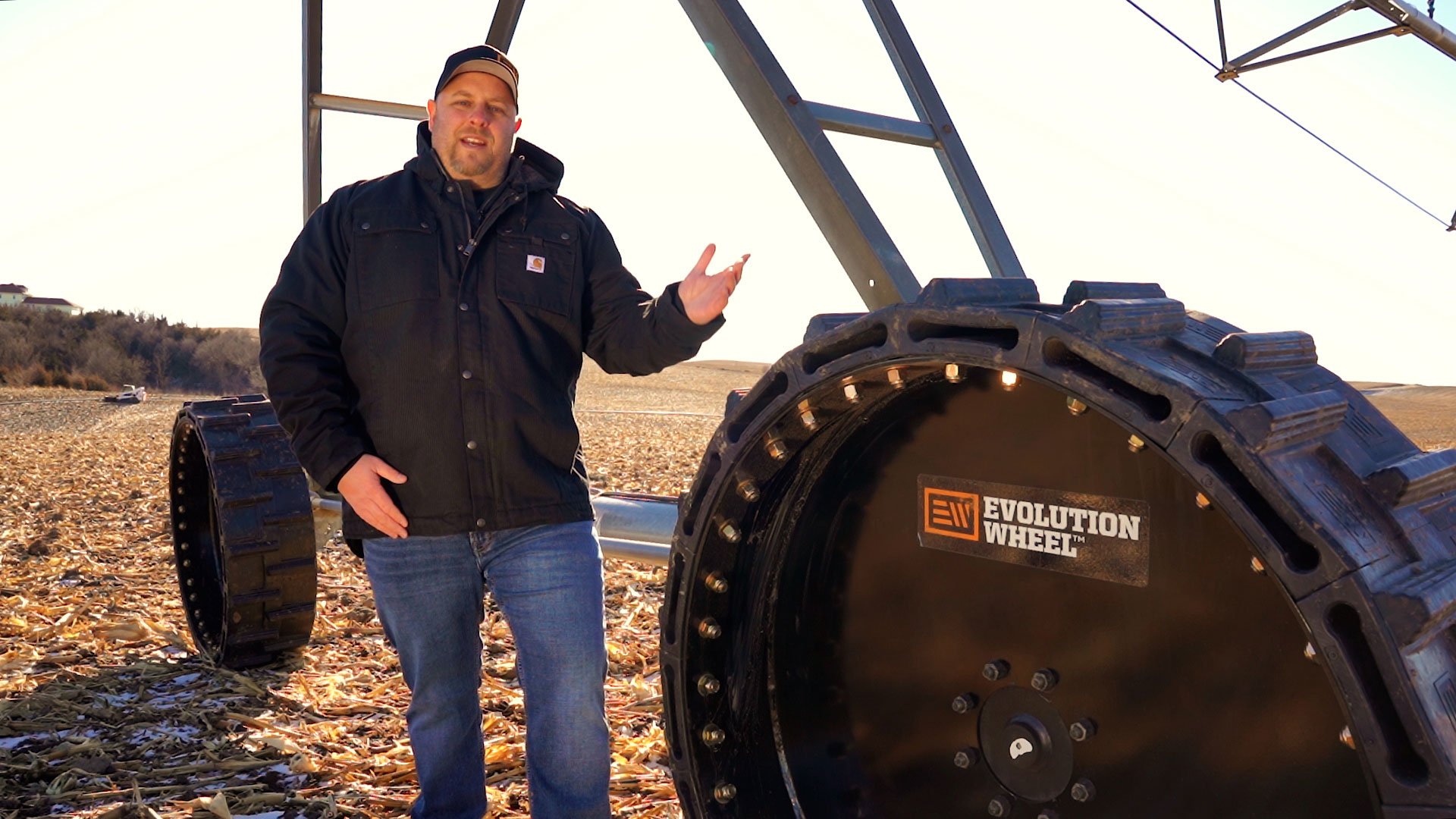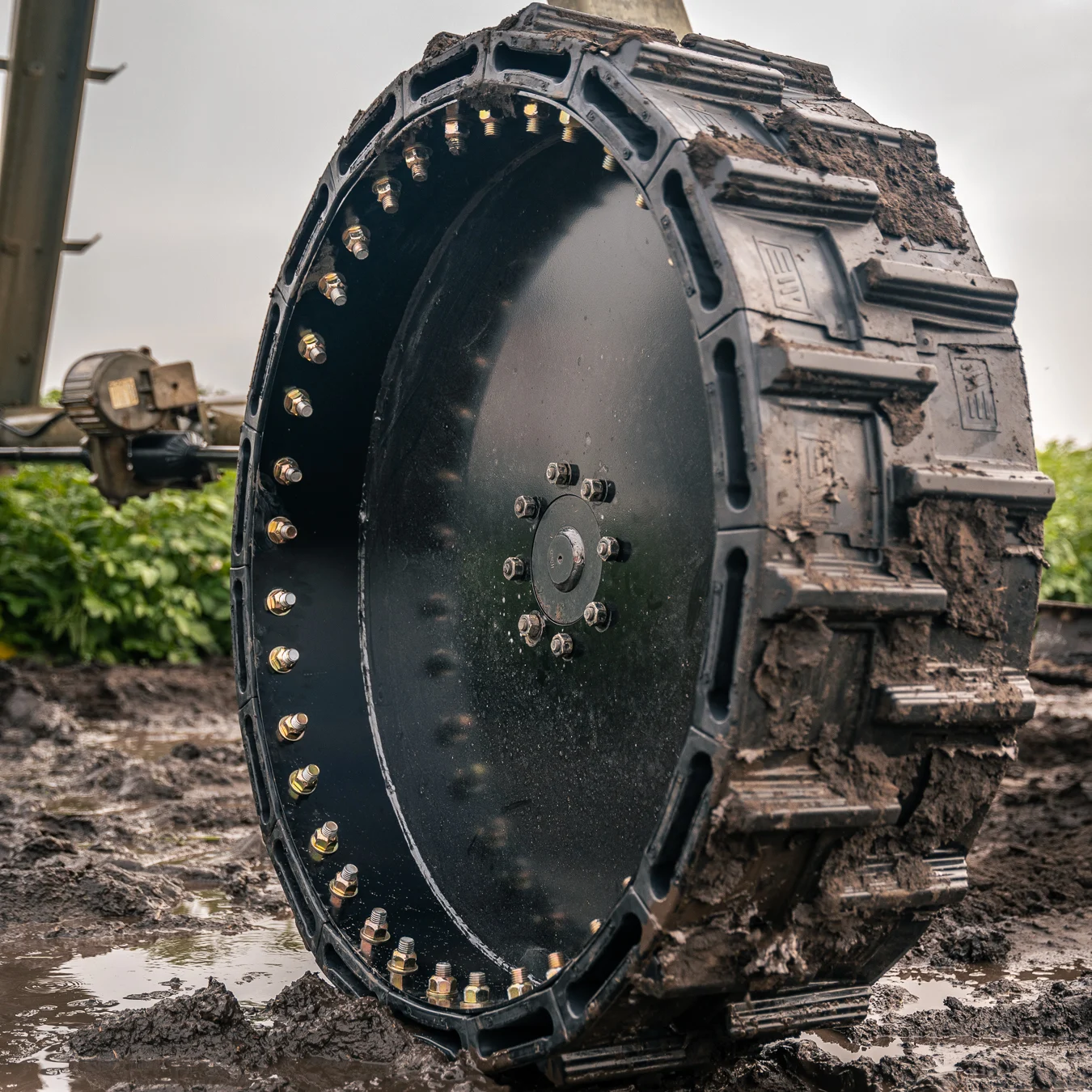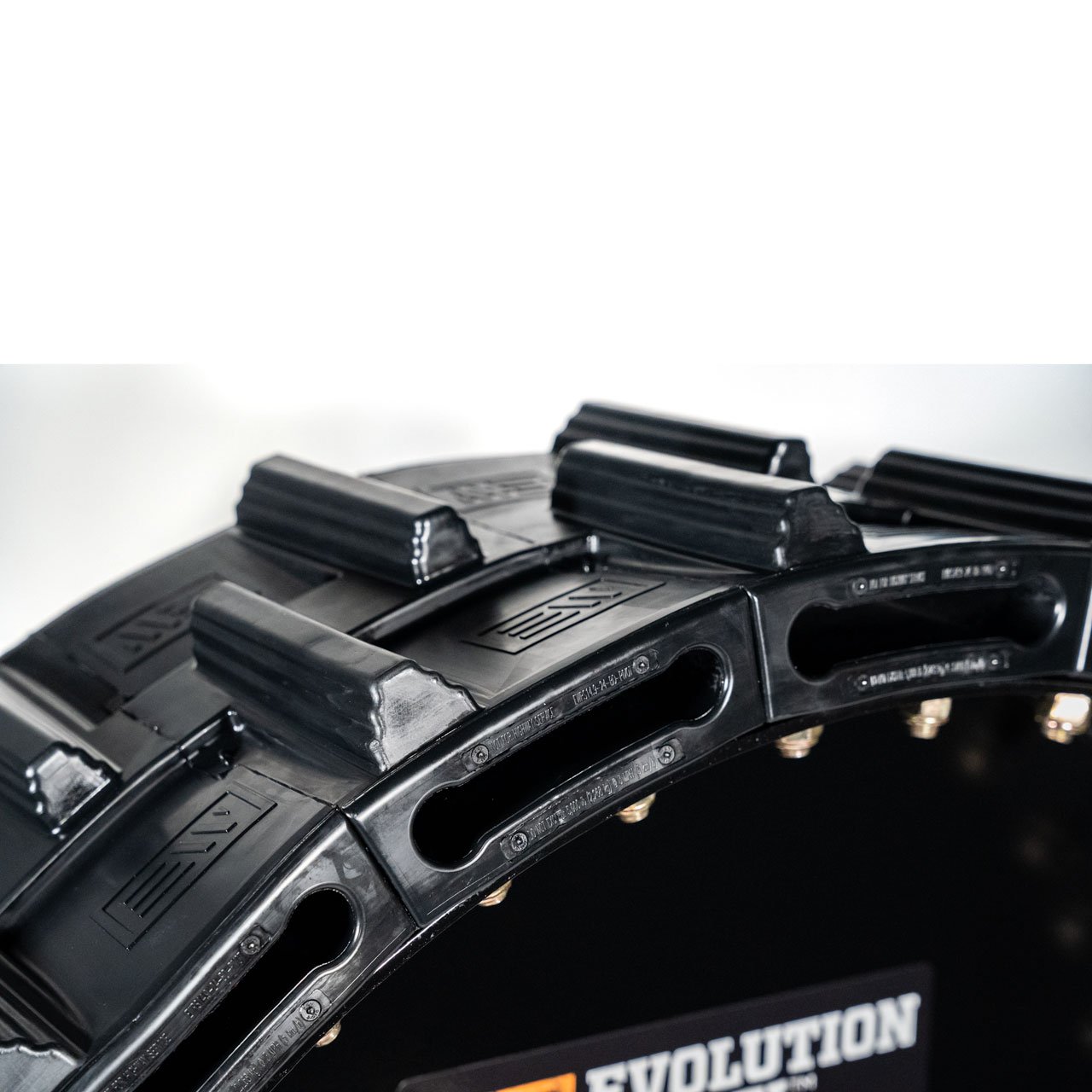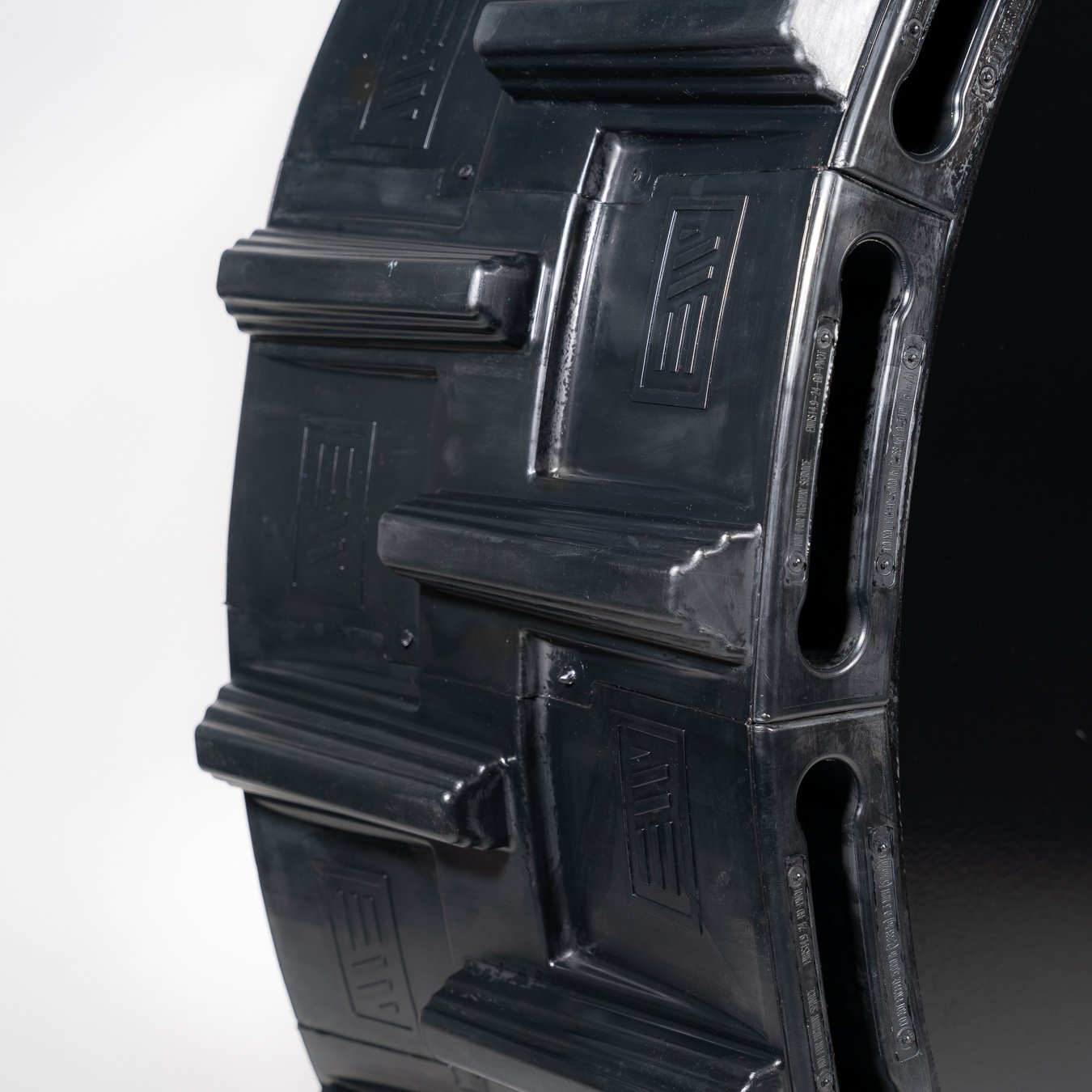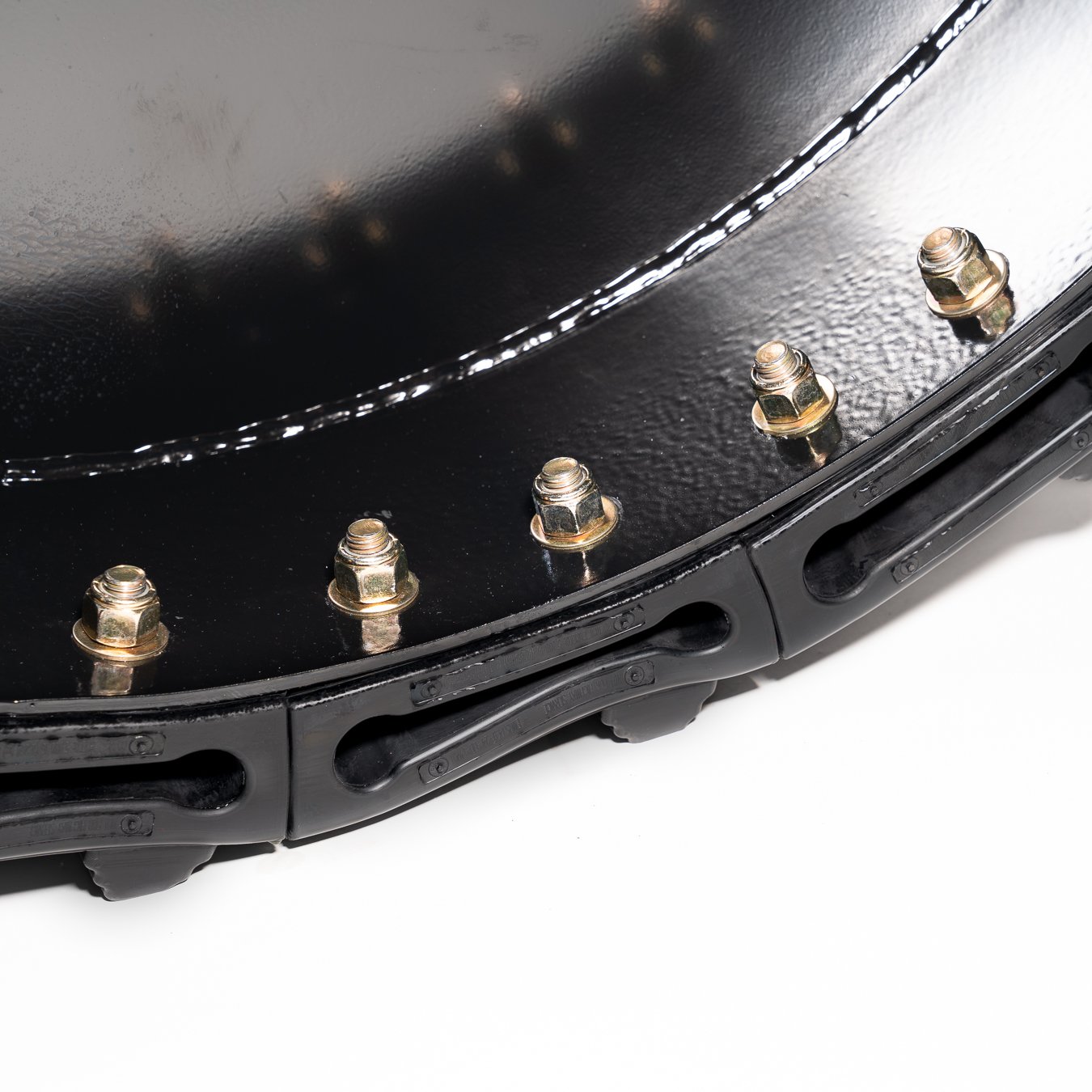Irrigation Tire Traction That Doesn’t Cause Ruts
A common trope that we see is that you can’t have traction while also having floatation. We want to let you know that you can have your cake and eat it too.
Bi-Directional Tread
The tread pattern on any tire is highly important. Most irrigation tires have a directional tread pattern. This means that the lugs on the tire are angled in one direction and are often designed to dig down for its traction. This isn't a problem on most machines as they are not traveling the same route continuously. However, due to the stationary movement of a field sprinkler system, these tread patterns cause deep ruts.
The EWRS-PIVOT features a bi-directional tread pattern that is designed not to displace dirt from underneath the tire. The EWRS-PIVOT also has a concave profile that holds mud underneath the tire as opposed to pushing it out to the side. Combining these two features minimizes ruts in your field.
Core Geometry
Airless irrigation tires have a reputation for having poor traction. This is due to their inflexibility. The EWRS-PIVOT uses unique core geometry designed to flex like a pneumatic tire to provide traction. When going over an obstacle, our tire will flex around it rather than slip like a steel or plastic tire would. The cores are also designed to compress completely. this allows them to push out any material that gets stuck within the cores creating a self-cleaning system.
Floatation
The concave profile is where floatation comes in. Unlike your traditional premium pneumatic tire, the EWRS-PIVOT series has a concave profile instead of a convex one. A concave profile refers to the shape of the tire where the diameter in the center is smaller than the diameter of the edges of the tire. This holds material underneath the tire when traveling over dirt where a convex tire will push material outwards.
On top of that, the EWRS-PIVOT series is true to spec tire meaning that the 14.9” x 24” dimensions are made to fit those specs exactly. Oftentimes manufacturers won’t build their tires to the specs that they advertise, negatively affecting floatation. Since the EWRS-PIVOT is a true-to-spec tire, the ground contact area is truly 14.9” wide, it spreads the weight of the system over a wider surface area increasing floatation.

Related Pages
If this page was informative, check these out:


